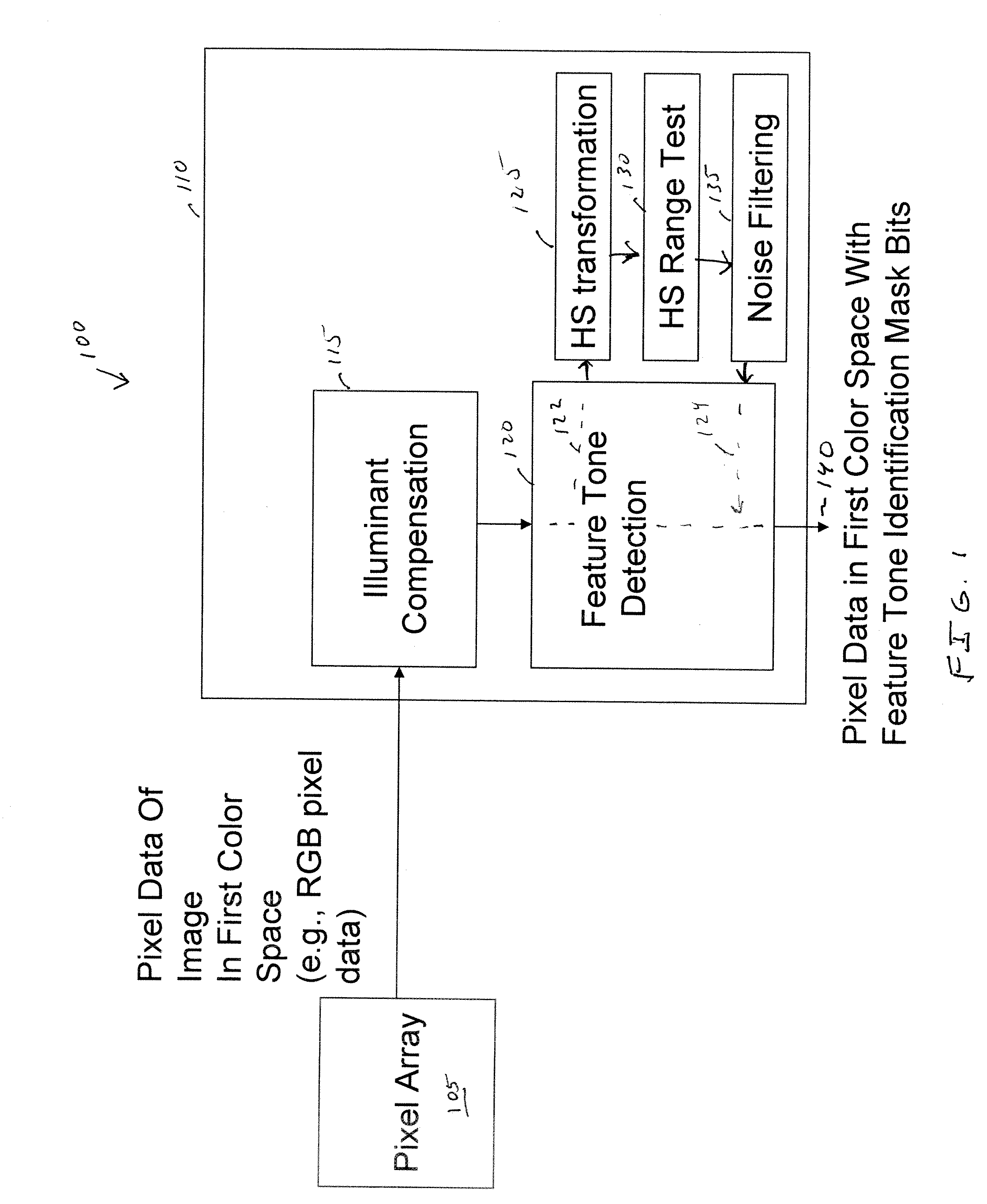Apparatus, system, and method for skin tone detection in a CMOS image sensor
a technology of image sensor and skin tone, applied in the field of skin tone detection techniques, can solve the problems of skin tone detection accuracy dependent on lighting, requires more computing power than desired, and based on optimal solution image processing algorithms typically require substantial computational resources,
- Summary
- Abstract
- Description
- Claims
- Application Information
AI Technical Summary
Benefits of technology
Problems solved by technology
Method used
Image
Examples
Embodiment Construction
[0015]FIG. 1 is a block diagram of an imaging system 100 in accordance with one embodiment of the present invention. A pixel array 105 generates pixel data in a first color space. As one example, the pixel data may be Red-Green-Blue (RGB) pixel data having a pre-selected number of bits allocated for each pixel to represent color data in each color channel (e.g., 8 bits per color in one implementation). However, it will be understood throughout the following discussion that RGB is merely an exemplary first color space and that other known alternatives to RGB are contemplated.
[0016]A captured digital image may be read out from pixel array 105 using conventional techniques, such as a row-by-row line readout. An image processing portion 110 processes the pixel data of a captured image and may include a line buffer memory (not shown) to buffer pixel data for a pre-selected number of lines of pixel data. Image processing portion 110 may be implemented using dedicated hardware and / or softw...
PUM
 Login to View More
Login to View More Abstract
Description
Claims
Application Information
 Login to View More
Login to View More - R&D
- Intellectual Property
- Life Sciences
- Materials
- Tech Scout
- Unparalleled Data Quality
- Higher Quality Content
- 60% Fewer Hallucinations
Browse by: Latest US Patents, China's latest patents, Technical Efficacy Thesaurus, Application Domain, Technology Topic, Popular Technical Reports.
© 2025 PatSnap. All rights reserved.Legal|Privacy policy|Modern Slavery Act Transparency Statement|Sitemap|About US| Contact US: help@patsnap.com



